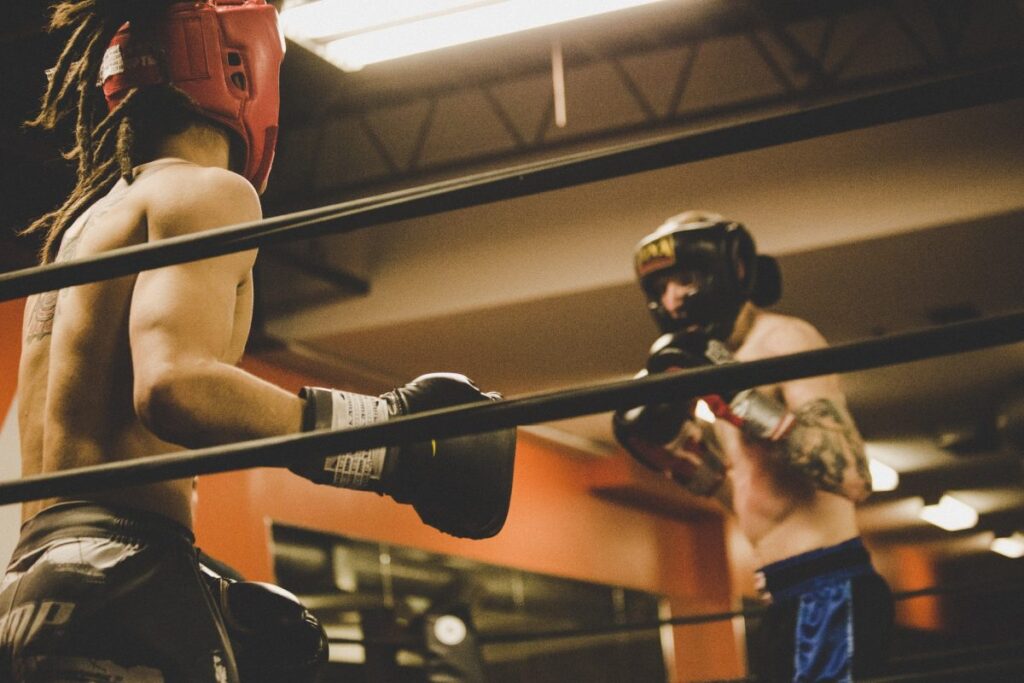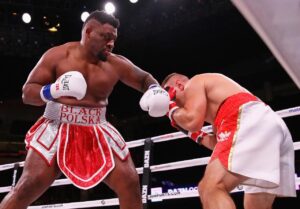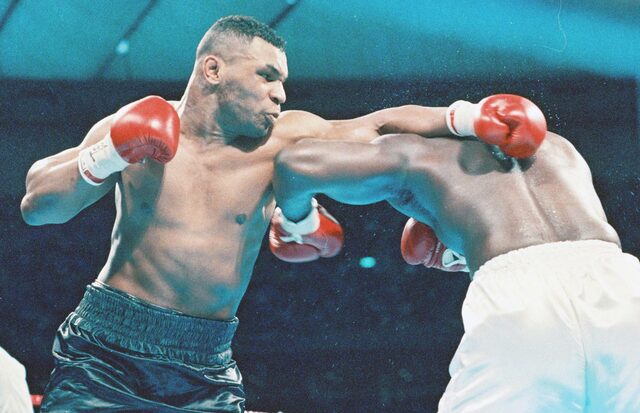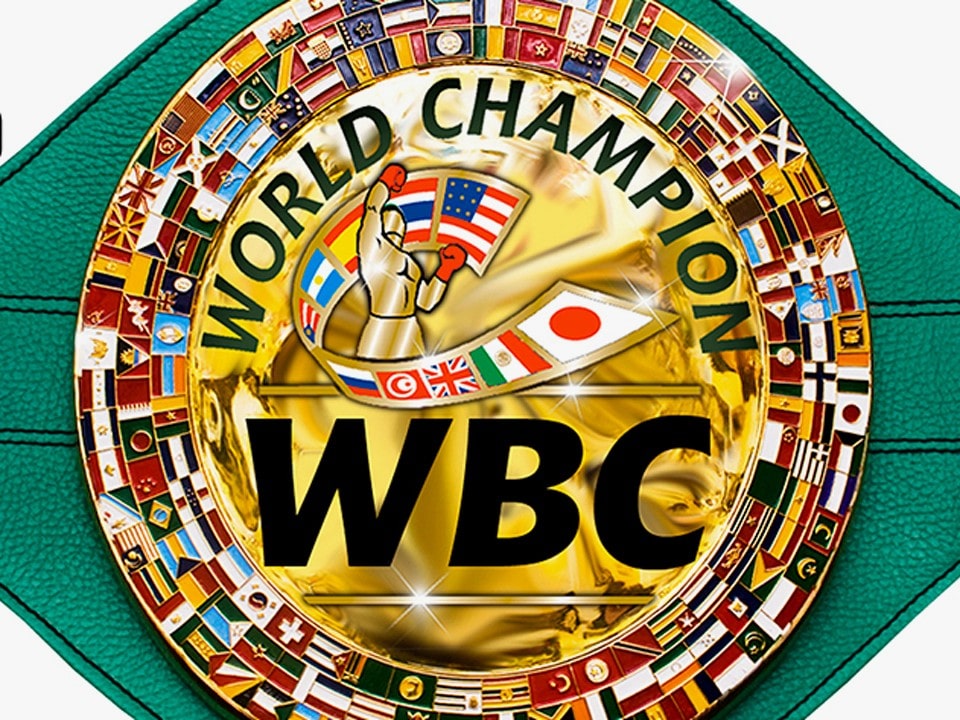
Boxing is a very dynamic and physical sport and can be particularly stressful on the wrists.
Many boxers experience wrist pain during training or competition, but this problem can be managed with proper prevention and measures.
In this article, we will delve into the causes of wrist pain in boxing, and provide detailed information on identifying symptoms, correct hitting techniques, preventive measures, and effective treatments.
This will help readers learn specific ways to properly manage wrist pain and improve boxing performance.
目次
Causes of wrist pain from boxing
Wrist pain is a common problem in boxing and is often caused by excessive strain and poor punching form.
It is important to understand these causes and take measures.
Excessive strain on the wrist
A punch in boxing is an action that concentrates a lot of force on the wrist.
The small bones and joints of the wrist are exposed to sudden pressure, especially when delivering a powerful punch.
Excessive stress on the wrist from repeated training or competition can lead to inflammation of the tendons and ligaments.
Also, if the muscles in your wrist are not fully developed, you are more likely to experience pain from an unexpected impact.
To avoid overstrain, you need proper rest, strength training, and correct hitting techniques.
Improper punching form
Improper punching form is another common cause of wrist pain.
Punching with incorrect form puts force on your wrist at an unnatural angle, which can damage your joints and tendons.
For example, punching with a bent wrist or a fist that is not properly locked can place unnecessary stress on the wrist.
By mastering correct form, you can reduce these risks and train effectively and safely.
It is important for athletes to constantly strive to improve their technique accuracy and maintain proper punching form under the guidance of a trainer.
By understanding these causes and taking appropriate precautions, boxers can minimize wrist pain and maintain long-term health.
Proper treatment in the early stages of pain is the key to preventing serious injuries.

Common symptoms of wrist pain
Wrist pain can be an unavoidable problem when boxing.
Wrist pain is often a sign of a variety of symptoms and problems, so it’s important to accurately identify the type and symptoms and respond appropriately.
Identifying pain types and symptoms
Wrist pain can manifest in a variety of ways, including sharp pain, dull ache, burning sensation due to inflammation, and swelling.
The type of pain and symptoms often indicate its cause, which can help select the appropriate treatment.
For example, sharp pain from the impact of a punch can indicate an acute sprain or ligament injury.
On the other hand, persistent dull pain or swelling after exercise is often caused by overuse and could be due to inflammation or tendon issues.
If you experience pain in your wrist, it is recommended that you closely monitor the type, timing, and duration of the pain, and seek medical attention at an appropriate medical institution.
Problems that pain may indicate
Problems that wrist pain can indicate include ligament damage, tendonitis, arthritis, and bone fractures.
These conditions have a high risk of becoming chronic if left untreated, so early treatment is necessary.
Especially in high-impact sports like boxing, the small bones in the wrist can collide with each other, causing fractures and cartilage damage.
Wrist pain can also sometimes limit hand movement and interfere with daily life.
If you experience any of these symptoms, receiving diagnosis and treatment from a professional doctor is the first step to recovery.
Wrist pain can have a wide range of causes and serious consequences, so it’s important to accurately identify the symptoms and possibilities when it occurs, and take appropriate measures promptly.

correct punching technique
Correct punching technique is essential to maximize performance in boxing and minimize the risk of injury.
This section will provide a detailed explanation, focusing on the basic form of punching and how to protect your wrists.
Basic punch form
The basic form of a punch is the foundation that allows you to strike effectively and reduce the risk of injury at the same time.
For proper form, your feet should be about shoulder-width apart and your knees should be slightly bent.
When you punch, power is generated through your legs and transferred through your hips to your upper body and arms.
Your arms should be relaxed, but at the moment of the punch, your fist should be firm and your wrist should be in a straight position.
This linked movement allows you to punch powerfully and safely.
How to play to protect your wrists
How to hit to protect your wrists is important to avoid injury while still being able to hit effectively.
It’s important to keep your wrists straight at all times, as bending your wrists when punching can put unnecessary pressure on your wrists and other joints, which can lead to injury.
It is also recommended to warm up thoroughly before hitting to properly stretch the wrist muscles and ligaments.
Additionally, it’s important to use proper gloves and wraps to provide good support for your wrists during training.
This protects your wrist from strong impacts and maintains long-term health.
By practicing these techniques, boxers can train and compete more safely and efficiently while preventing wrist injuries.
Correct punching form and wrist protection are the basics of improving boxing technique, and are important skills that all boxers should master.

How to prevent wrist pain
Proper warming up, cooling down, and using the correct training equipment are important to prevent wrist pain when boxing.
These precautions will maximize the effectiveness of your training while minimizing the risk of injury.
Proper warming up and cooling down
Warming up is essential to properly prepare your body before training or competition.
The wrist in particular is made up of many small bones and joints, so keeping it warm will reduce the risk of injury.
General stretches, including wrist movements, and light cardio exercises are effective for warming up.
This increases blood flow and makes the muscles around your wrist more flexible.
Cooling down is equally important, relieving wrist tension after a workout and helping muscles and ligaments recover.
A light massage of your wrists can reduce inflammation and prepare you for your next workout.
How to choose training equipment
Choosing the right training equipment is critical to protecting your wrists.
Boxing gloves should provide adequate support for your wrists and be able to absorb shock.
There are many different types of gloves on the market, but it is important to choose one that fits your hand size and has sufficient padding in the wrist area.
Additionally, a proper wrist wrap will increase wrist stability during punching and prevent unnecessary twisting and bending.
Proper use of these equipment can enhance the effectiveness of your training and effectively prevent wrist injuries.
By implementing these precautions, boxers can effectively prevent wrist pain and enjoy boxing for a long time.

Treatment for wrist pain
Wrist pain in boxing is an unavoidable problem, but proper treatment can speed recovery and reduce the risk of further injury.
Learn more about home remedies and treatment options from your health care professional.
Remedies you can take at home
When you experience wrist pain, it is important to first stop training and rest your wrist in order to eliminate the cause of the pain.
For pain and swelling, applying an ice bag or cold pack to your wrist for about 20 minutes can reduce inflammation and relieve pain.
This cooling is effective if done several times a day. Additionally, proper wrist immobilization prevents unnecessary movement and promotes healing.
Fixation can be achieved using wrist wraps or supports, but care must be taken not to tighten them too much.
Incorporating light stretches and exercises to strengthen the wrist muscles can also help support recovery.
Treatment options from a medical professional
In addition to home remedies, if the pain persists, it is recommended to see a medical professional.
Orthopedic surgeons and rehabilitation specialists use diagnostic tools such as x-rays and MRI to identify specific wrist problems.
Based on the diagnosis, treatments may include physical therapy, ultrasound therapy, and laser therapy.
These treatments aim to reduce inflammation, relieve pain, and restore wrist function.
Depending on the symptoms and cause, steroid injections or surgery may be required.
By proceeding with treatment under an appropriate treatment plan by a medical professional, it is possible to promote recovery efficiently and reliably.
Wrist pain is a problem that can be overcome if properly managed.
From simple treatments at home to professional treatment, you can safely enjoy boxing by taking advantage of various options.

Rehabilitation and recovery process
Rehabilitation plays a very important role in recovering from wrist injuries and pain.
This section delves into the importance of rehabilitation and effective rehabilitation techniques.
Importance of rehabilitation
Rehabilitation after a wrist injury is essential to reduce the severity of the injury and prevent future problems.
Through the rehabilitation process, strength and flexibility of the wrist are restored and normal function is restored.
Appropriate rehabilitation can improve wrist movement, reduce pain, and facilitate a smooth return to sports activities.
Additionally, rehabilitation lowers the risk of recurrence and helps prevent long-term disability.
effective rehabilitation techniques
Effective rehabilitation techniques include exercises to improve range of motion, training to strengthen muscles, and methods to manage pain.
The following techniques are especially recommended for wrist rehabilitation:
- Stretching Exercises : Perform gentle stretching exercises to improve wrist flexibility. This includes rotation of the wrist and extension movements with the fingers.
- Strengthening Exercises : Use light weights or resistance bands to gradually strengthen the muscles around your wrists. This provides more support to your wrist and improves performance in daily activities and sports.
- Pain management techniques : There are a variety of approaches to reducing pain, including cold and heat therapy and, if necessary, the use of nonsteroidal anti-inflammatory drugs (NSAIDs).
It is important to carry out these rehabilitation techniques in a planned manner under the guidance of a specialist.
You should work closely with your health care provider and physical therapist to design a rehabilitation program tailored to your individual situation and aim for effective recovery.

A psychological approach to dealing with wrist pain
Wrist pain isn’t just a physical obstacle for boxers and other athletes; it can also have psychological effects.
In this section, we delve into how to deal with pain and support recovery using sports psychology.
How to deal with pain
When faced with wrist pain, accepting its impact and dealing with it appropriately is the first step to recovery.
It is important to start by changing your perception of pain. By viewing pain as part of your overall training and competitive life, you can reduce your fear and anxiety about it.
Also, resetting your goals to be short-term and breaking them down into small, achievable steps will help you see ongoing improvement.
This is expected to maintain motivation and improve self-efficacy.
Recovery support using sports psychology
Sports psychology is also a very useful tool in the injury recovery process.
Learning techniques to deal with psychological stress and pain allows athletes to recover faster and more effectively.
Specifically, methods such as relaxation techniques, visualization (mental imagery training), and goal setting are effective.
Using these techniques, athletes can manage pain and gain greater control over their physical and mental states.
It can also promote positive thinking and develop the ability to overcome temporary adversity and setbacks during the recovery process.
By proactively adopting these psychological approaches, you can make the process of dealing with wrist pain more positive and accelerate your overall recovery.
Utilizing the principles of sports psychology plays an important role not only in physical treatment but also in psychological recovery.



